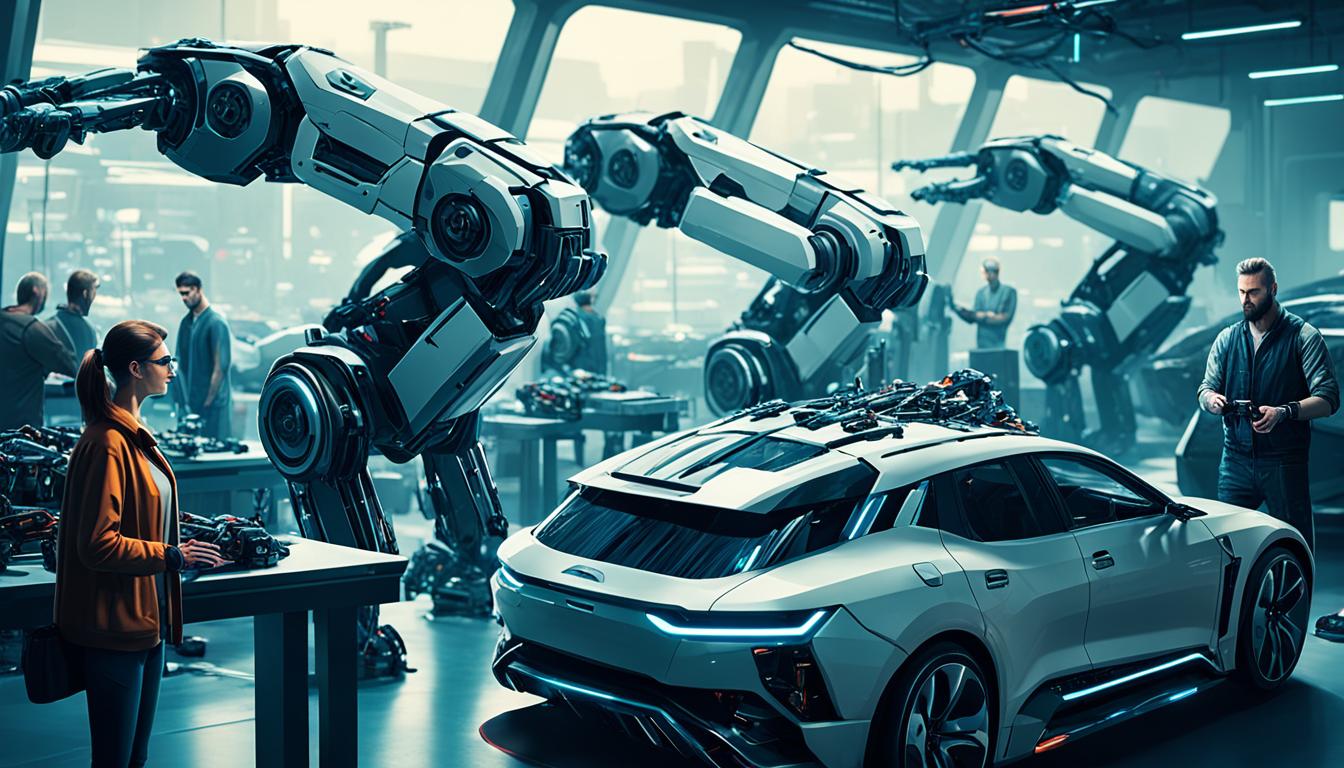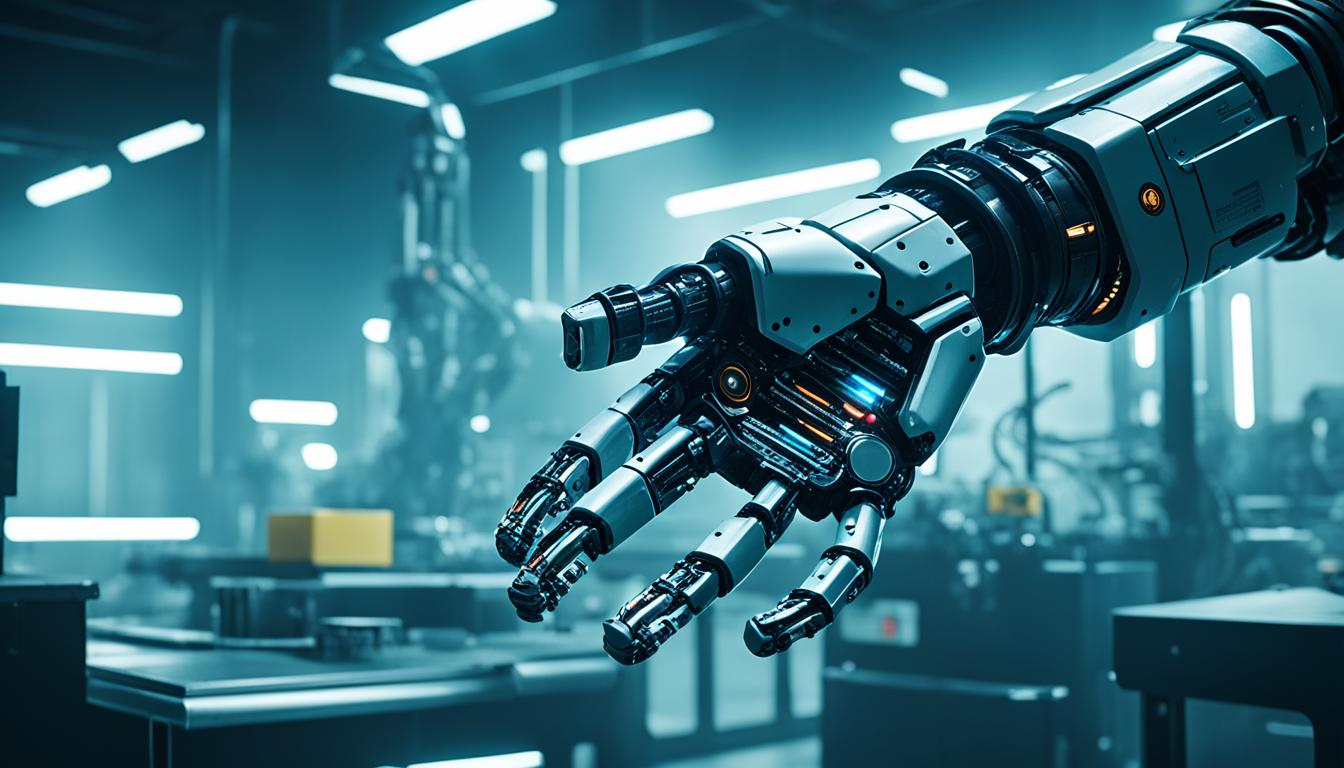
The rapid advancements in artificial intelligence, machine learning, and robotic process automation are poised to have a profound impact on the future of work. As technology continues to evolve, the potential for workforce displacement, skill obsolescence, and labor market disruption looms large. However, these technological trends also present opportunities for job creation, reskilling, and upskilling that can reshape the employment landscape.
According to the McKinsey Global Institute’s research, AI is expected to deliver an additional $13 trillion in global economic activity by 2030, amounting to a 16% increase in cumulative GDP. This growth will primarily come from the substitution of labor through automation and increased innovation in products and services. However, the same report indicates that by 2030, while 70% of companies will have embraced the AI revolution and adopted at least one type of AI technology, less than half will have fully absorbed the five categories of AI.
### Key Takeaways
– The rise of
artificial intelligence
and
automation
is transforming the workplace, leading to potential job displacement and skill obsolescence.
– Certain sectors, such as customer service, receptionists, accounting, sales, and research and analysis, are most vulnerable to automation.
– Estimates suggest that a substantial number of jobs may be lost, with 32-42% of the roughly 40 million jobs lost during the pandemic not returning, and roughly half of the tasks performed by today’s workforce potentially being automatable.
– The
skills gap
and need for
reskilling
and
upskilling
are crucial to adapting to the future of work.
– Emerging job opportunities in the
AI
and
tech sectors
may help offset the impact of automation.
The Rise of Artificial Intelligence and Automation
The rapid advancements in artificial intelligence (AI) and automation technologies are transforming the modern workplace at an unprecedented pace. As these innovative solutions become more accessible and sophisticated, businesses are increasingly embracing them to drive productivity, efficiency, and cost-savings. From robotic process automation (RPA) to machine learning algorithms, the integration of AI and automation is reshaping how work is performed across a wide range of industries.
How AI and Automation are Transforming the Workplace
The integration of AI and automation into the workplace has brought about significant changes in the way tasks are carried out. Many routine and repetitive activities that were once the domain of human workers are now being automated, freeing up employees to focus on more strategic, creative, and value-added responsibilities. This shift has the potential to enhance overall productivity and competitiveness, as companies can leverage these technologies to streamline operations, reduce errors, and improve service delivery.
The Potential for Job Displacement and Skill Obsolescence
While the adoption of artificial intelligence and automation holds immense promise, it also raises concerns about the potential for job displacement and skill obsolescence. As certain job functions become increasingly automated, workers may find themselves facing the risk of having their roles diminished or even eliminated entirely. This can lead to a significant disruption in the labor market, as employees are required to adapt to new ways of working and acquire new skills to remain competitive.
The impact of this transformation is likely to be felt across various sectors, with industries such as customer service, administrative support, and certain manufacturing tasks being particularly vulnerable to automation. As a result, individuals and organizations will need to proactively address the challenges posed by these technological advancements, focusing on reskilling and upskilling initiatives to ensure a smooth transition to the workforce of the future.
What are the potential impacts of 2025’s technology trends on job automation?
Sectors Most Vulnerable to Automation
As the development of automation through technologies like robotics and artificial intelligence continues to advance, certain sectors are more susceptible to the potential impacts of job automation. Occupations involving customer service, receptionists, accounting, sales, and research and analysis are among the sectors vulnerable to automation. These roles often involve repetitive, rule-based tasks that can be readily automated, leading to concerns about job displacement and skill obsolescence in these areas.
Estimates of Job Losses and Creation
Estimates suggest that the impacts of 2025’s technology trends on job automation could be significant. Researchers estimate that a substantial number of jobs may be lost, with 32-42% of the roughly 40 million jobs lost during the pandemic not returning, and roughly half of the tasks performed by today’s workforce potentially being automatable. However, the disruption caused by job automation is also expected to create new employment opportunities, particularly in the AI and tech sectors. The challenge will be ensuring that workers possess the necessary skills to transition into these emerging roles.
The Skills Gap and Need for Reskilling
As job automation transforms the workplace, the skills gap between the demands of the future job market and the current capabilities of the workforce becomes increasingly apparent. To address this, experts emphasize the critical need for reskilling and upskilling programs to help workers adapt to the changing landscape. Perennial learning and an aptitude with AI assistants and robotic tools will be essential to ensure workers can keep pace with the advancements in technology that are shaping the future of work.

Adapting to the Future of Work
As the landscape of work continues to evolve, driven by advancements in artificial intelligence and emerging technologies, it is crucial for individuals to embrace lifelong learning and upskilling to stay competitive in the job market. According to the World Economic Forum, more than 50% of all professions will require reskilling or upskilling by 2025 to accommodate the rapid technological changes.
The Importance of Lifelong Learning and Upskilling
In an era where automation and AI-powered tools are transforming traditional workflows, workers must cultivate an aptitude for managing and supervising these autonomous systems. Perennial learning will become a necessity, as employees seek to develop the skills needed to thrive in the future of work.
Emerging Job Opportunities in the AI and Tech Sectors
The rapid advancements in AI and tech sectors are giving rise to a wealth of new job opportunities that require specialized skills. From data analysts and machine learning engineers to cybersecurity experts and user experience designers, the demand for highly skilled professionals in these fields is expected to soar. By proactively upskilling and embracing lifelong learning, individuals can position themselves to capitalize on these emerging job opportunities and thrive in the future of work.
Conclusion
The impact of 2025’s technology trends on job automation is poised to be significant. The rise of artificial intelligence and automation is transforming the workplace, leading to potential job displacement and skill obsolescence. Certain sectors, such as customer service, receptionists, accounting, sales, and research and analysis, are most vulnerable to automation.
Estimates suggest that a substantial number of jobs may be lost, with 32-42% of the roughly 40 million jobs lost during the pandemic not returning, and roughly half of the tasks performed by today’s workforce potentially being automatable. This impending shift necessitates a proactive approach from both individuals and organizations to adapt to the future of work.
By embracing lifelong learning and upskilling, you can position yourself to thrive in the face of technological advancements. Additionally, emerging job opportunities in the AI and tech sectors offer promising avenues for those willing to acquire the necessary skills. As the world of work continues to evolve, staying ahead of the curve and embracing the opportunities presented by 2025’s technology trends will be crucial for your long-term career success.
FAQ
What are the potential impacts of 2025’s technology trends on job automation?
According to research, the development of automation enabled by technologies like robotics and artificial intelligence (AI) brings the promise of higher productivity, increased efficiencies, safety, and convenience, but also raises difficult questions about the broader impact on jobs, skills, wages, and the nature of work itself. Many activities that workers carry out today have the potential to be automated.
How are AI and Automation transforming the workplace?
The rise of AI and automation is transforming the workplace, leading to potential job displacement and skill obsolescence. Researchers agree that perennial learning will be a necessity to ensure workers keep pace with the advance in technology, and an aptitude with AI assistants and robotic tools may become the norm as workers will likely need to deal with changes in traditional workflows and the supervision and management of autonomous and automated devices.
Which sectors are most vulnerable to automation?
Certain sectors, such as customer service, receptionists, accounting, sales, and research and analysis, are most vulnerable to automation. Estimates suggest that a substantial number of jobs may be lost, with 32-42% of the roughly 40 million jobs lost during the pandemic not returning, and roughly half of the tasks performed by today’s workforce potentially being automatable.
What is the impact of 2025’s technology trends on job creation and the skills gap?
The World Economic Forum predicted that by 2025, more than 50% of all professions will need reskilling or upskilling to accommodate advances in technology. This highlights the skills gap that will need to be addressed, as workers will need to adapt to the changing job market and embrace lifelong learning to stay competitive.
What are the emerging job opportunities in the AI and tech sectors?
As the adoption of AI and automation increases, new job opportunities will emerge in the AI and tech sectors. These may include roles in data analysis, machine learning, software development, and the supervision and management of autonomous systems. Upskilling and reskilling will be crucial for workers to take advantage of these emerging job opportunities.
